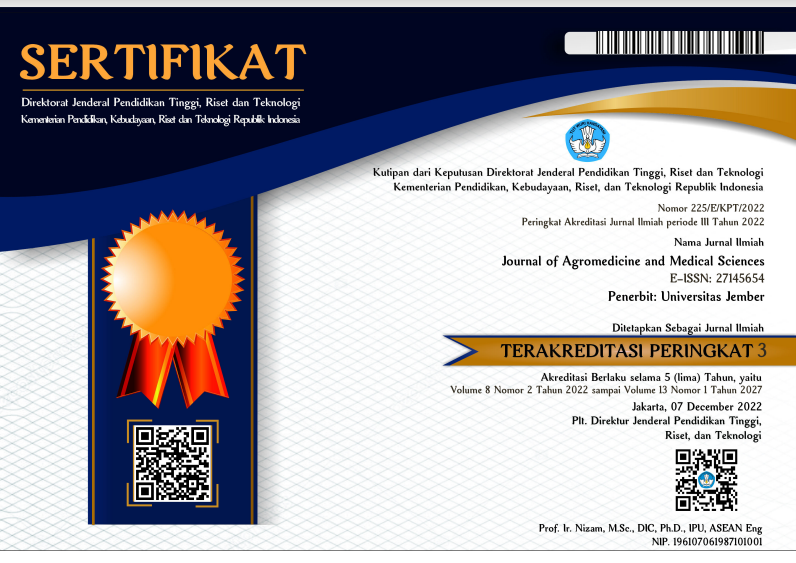The Effect of Neem (Azadirachta indica) Gum Administration to Malondialdehyde Level of Wistar Rats’ Kidney Induced by Diazinon
DOI:
https://doi.org/10.19184/ams.v9i1.35312Abstract
Diazinon is the most commonly used pesticide in Indonesia. It may increase the production of free radicals that triggers the lipid peroxidation process which will produce the final product, MDA, which can damage cells and tissues, especially the kidneys. Neem gum with its high polysaccharide is a good antioxidant agent to neutralize free radicals. The purpose of this study was to determine the effect of neem gum administration to prevent the increase in kidney MDA levels of wistar rats induced by diazinon. Thirty wistar rats were divided into 6 groups, K0 (given cornoil), K1 (induced DZN 40 mg/kgBW), groups P1, P2, P3, and P4, administered with neem gum as a drinking water at a dose 3.75 g/kgBW, 7.5 g/kgBW, 15 g/kgBW, and 30 g/kgBW and induced by DZN 40 mg/kgBW. The treatment was carried out for 8 days, in which diazinon induction and neem gum solution were administered simultaneously. The average renal MDA levels are K0=20.85±1.10; K1=26.98±5.87; P1=26.84±3.75; P2=21.43±3.44; P3=20.23±3.27; P4=21.99±1.70. One Way ANOVA test showed a significant difference (p<0.05). The LSD posthoc test showed a significant difference in the treatment groups P2, P3, and P4 compared to the K1 group (p<0.05). This shows that the neem gum solution at a dose of 7.5 g/kgBW, 15 g/kgBW, and 30 g/kgBW can prevent the increase of kidney MDA level in wistar rats induced by diazinon.
Keywords: Pesticide, oxidative stress, Antioxidant, Neem gum























